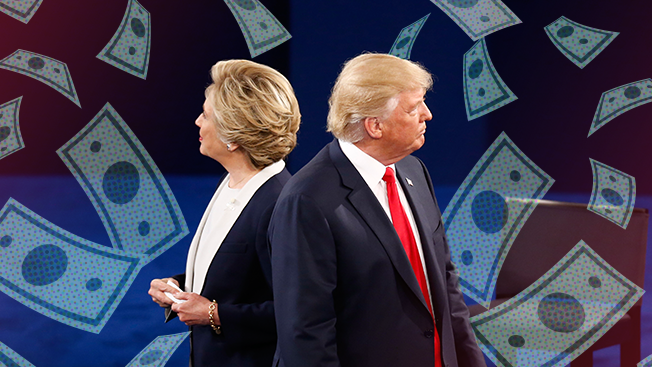Inspiration meets innovation at Brandweek, the ultimate marketing experience. Join industry luminaries, rising talent and strategic experts in Phoenix, Arizona this September 23–26 to assess challenges, develop solutions and create new pathways for growth. Register early to save.
Political ad spending is like a river, but many campaigns continue to falter by swimming against the current.
This year's election cycle may prove to be the final time political campaigns are run like it's still the early 2000s.

Sean Duggan
The shifting dynamics of ad spending in American politics is yet another bizarre component of this memorably quixotic election year. This reality is fueled, at least in part, by the strikingly modest spending on the part of Donald Trump's campaign, particularly during the GOP primary. Trump's commanding early primary victories left a vast field of consultants and campaigns questioning the effectiveness of paid advertising.
As we speed toward Nov. 8, some answers are finally imminent. And they could ultimately be nothing short of game changing for politics as usual in advertising.
Despite the home-stretch acceleration of ad spending on the part of Trump, Hillary Clinton has still outspent her opponent by a lopsided 7-to-1 ratio during the past three months, according to AP estimates. If Trump manages to win—or even make it respectably close—the reverberations throughout the political advertising world will be nuclear in the force of their impact.
In recent years, media planning and campaign tactics have ignored—to their ultimate detriment—major media consumption and communication shifts. As a result, consumer marketers are now doing a better job commandeering the modern media landscape than the majority of political campaign consultants.
Consider the decisions of media consultants in charge of spending $100 million for Jeb Bush's super PAC.
"The super PAC consistently bought broadcast television advertising in the biggest, most expensive markets at the highest possible rates," said Molly Ball in the October 2016 issue of The Atlantic. "It Fed-Exed tablet-like mailers to New Hampshire voters that played a documentary about Bush's life, and put just 1.4 percent of its budget toward digital ads, an abnormally tiny amount for a top super PAC."
A mere 1.4 percent for digital? Just let that sink in for a minute.
Political spending on digital media was expected to break the $1 billion mark for the first time in 2016, according to Borrell Associates, but at a paltry 9.5 percent of total spending, it would seriously lag behind most consumer marketing categories now earmarking 30 to 50 percent for digital.
Notwithstanding the ballot burnout most Americans are already experiencing this election season, the 2020 presidential campaign will unofficially commence before the confetti stops falling for the next president-elect. And the lessons learned from the disparate advertising strategies of Clinton and Trump will undoubtedly be studied—and not just by those seeking the highest office in the land.
People intending to seek local, state and national office in the future are all paying attention. And they've learned from the presidential politics of 2016 that candidates must now go where the voters are. And the majority of voters are not sitting in an easy chair watching repetitive 30-second spots all evening (as the broadcast TV audience grows smaller by the day). As for young consumers, media-savvy millennials cut the cord a long time ago.
Where are the voters today? They're sharing on social media, streaming music, reading news and commentary on Twitter and Facebook, playing games and watching video on their favorite apps. A winning political ad strategy should embrace and leverage the data-driven social, audio and other digital platforms that offer campaigns access to a wide spectrum of voters. Embracing digital is vital to winning campaigns at every level—national, statewide and local.
Pandora is on pace to double its political advertising business in 2016 and is proving particularly effective at delivering voter audience scale and precision targeting.
Of the big bucks candidates and super PACs will spend online this election, "half will go to Facebook and Google, Pandora—those are the big ones—and Twitter," said Jordan Lieberman, politics and public affairs lead at the political targeting firm Audience Partners.
The wave of the future is here now: digital political advertising, often mobile, and precisely targeted. As we have already seen this election year, relying exclusively on the political advertising playbook of 2000 is a risky proposition. Candidates seeking election will need to embrace digital media if they want to catch any fish in this river.








